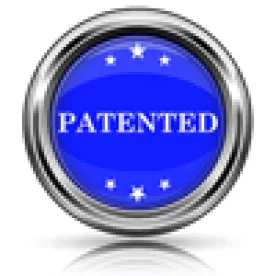Addressing the issue of whether jury determinations of invalidity and non-infringement were inconsistent where claim terms had more than one possible “plain and ordinary meaning,” the US Court of Appeals for the Federal Circuit upheld the verdict and the district court’s subsequent denial of a new trial, concluding that the patentee had waived any claim construction arguments, that the determinations of non-infringement and invalidity were consistent, and that any claim construction error was harmless in light of the patentee’s concessions regarding invalidity. TVIIM, LLC v. McAfee, Inc., Case No. 16-1562 (Fed. Cir., Mar. 21, 2017) (Reyna, J).
TVIIM, a non-practicing entity, filed a patent infringement suit against McAfee alleging that McAfee’s “Program Updates” product/feature infringed TVIIM’s patent. The asserted patent covers a method of providing a security assessment for a computer by broadly undertaking the following steps: identifying the configuration of a computer, such as installed programs; identifying vulnerabilities associated with the configuration; and performing various utility functions (i.e., corrective measures) in response to the identified vulnerabilities. McAfee’s accused Program Updates feature had four basic functions: identifying non-Windows programs on a computer; checking a national database to determine whether there were any known vulnerabilities for the current version of the identified programs; determining whether an update was available for the identified programs; and downloading any available update, regardless of whether known vulnerabilities were found.
Prior to the trial, TVIIM asked the district court to construe a single term: “vulnerability.” The court found that the term should have its “plain and ordinary meaning.” Both parties thereafter agreed that no further construction was necessary. At trial, McAfee argued that two prior art references anticipated, or rendered obvious, the asserted patent. The references disclosed identifying vulnerabilities in a computer system and providing detailed information to the user. For both references, the user (and not the system) had to take any desired corrective action. The proper scope of the asserted claims became a key issue at trial, including whether the McAfee product or prior art references took action “in response” to identifying vulnerabilities. At the close of trial, the jury found that the asserted patent was not infringed and was invalid. TVIIM filed motions for judgment as a matter of law (JMOL) and a new trial, arguing that the jury had rendered an inconsistent verdict because it could not have arrived at both a non-infringement and an invalidity determination using a single construction of three key claim terms. TVIIM conceded that it did not seek construction of any of these terms before or during trial. After the district court denied the motions, TVIIM appealed.
The Federal Circuit upheld the verdict and the district court’s denial of JMOL or a new trial. First, the Court restated the axiom that “claim terms must be construed the same way for the purpose of determining invalidity and infringement.” It held, however, that TVIIM had waived any claim construction arguments by failing to seek construction of the three terms it alleged were construed differently for infringement versus invalidity. Next, the Court went through each of the three claim terms and found that substantial evidence supported the jury verdict of non-infringement based on using the same construction the jury had likely used for its invalidity verdict. Finally, the Court noted that any potential error in claim construction was harmless because TVIIM conceded that the jury’s invalidity determination could be proper under “any single ordinary meaning construction.”
Practice Note: Jurors may interpret the “plain and ordinary meaning” of claim terms differently than a party expert. If there is doubt as to the meaning of a claim term, likely best practice is to propose a clear meaning for the term.



 />i
/>i

